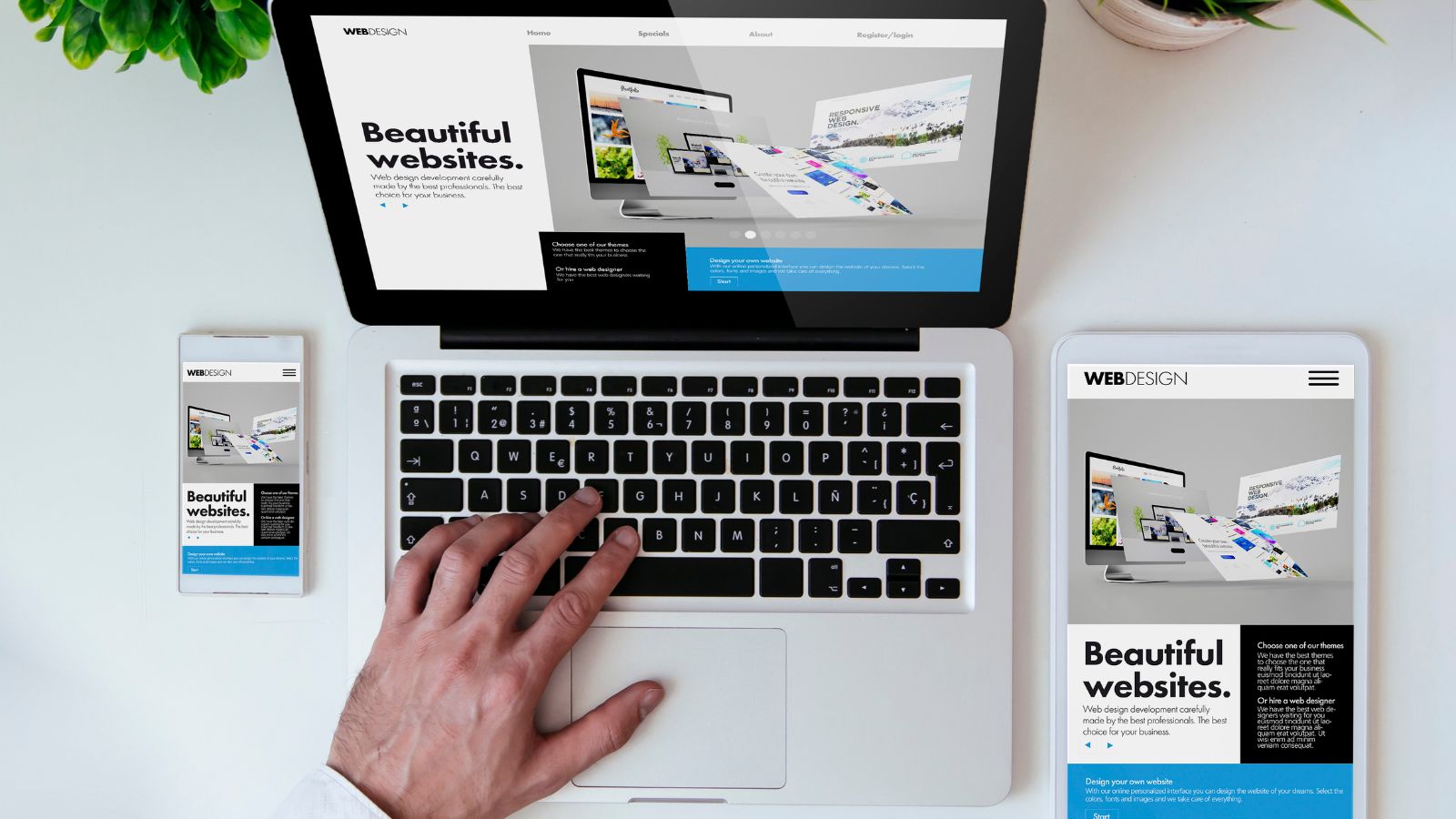
Enterprise-scale content management solutions are required. Therefore, with an expanding digital storefront, it’s not enough to merely have scaled options. Established CMS solutions cater to small and mid-range offerings with relatively static content even developed over a lifetime; however, for the global enterprise ready to grow, the CMS solutions are too generic.
The Architecture Behind Enterprise Scalability
A headless CMS works by decoupling the content management component from the delivery component. In other words, the front end (what users see and access as content) and back end (where the content is created) are not linked. This more contemporary system allows a business to use APIs to easily shove its content to as many delivery components as it desires web, mobile, IoT, AR/VR, etc. Where a traditional CMS integrates the delivery channel with the content essentially tethered and therefore inseparable a headless CMS promotes the opposite of the tethering in which content transfer can be used for any device/app/layer and since this was the case from the beginning, it can always be reused. Therefore, a headless CMS for enterprise scalability is essential. It boasts the customization options, effectiveness, and the capability to fulfill the most demanding content management needs.
This is a beneficial structure for businesses with various digital platforms through which they interact with their clients. Instead of needing separate, independent solutions to work across multiple channels, a headless CMS can be the glue that makes everything operate without overlap or redundancy. For instance, a worldwide clothing retailer does not need three separate inventory lists, one for the website, one for the mobile app, and one for the in-store tablets. They can maintain one inventory list on the back end and create a front-end customized experience for each. This saves time and reduces the risk of human error or inconsistent content. A headless CMS enables business development and scaling, too. As businesses evolve, there’s the opportunity to add markets, specific regions or integrations down the road.
A headless CMS seamlessly updates content for international campaigns, new business verticals, or requirements for integrations on more platforms. An example is an e-commerce apparel company looking to expand internationally. A headless CMS allows it to easily change content for internationalization efforts without affecting integrations on its U.S. sites. This decoupled functionality guarantees that companies remain in touch with what their consumers want if new features are released, a market trend is adjusted, or companies branch out in different directions, a headless CMS gives companies the agility to be uniform and always ready to deliver the best UX when and where it’s needed.
Supporting Global Growth
Perhaps the biggest hurdle facing companies today is content scaling with international enterprise. Managing all the content needed for different regions, different languages, and different uses is overwhelming and yet with a headless CMS for enterprise scaling, companies have the access and one-stop-shop solution they need for international management and local implementation. A headless CMS solution for enterprise options allows enterprise companies to manage content from a master site without worrying about performance degradation; sites are decoupled from presentation layers, which allows for automatic yet easy backend management to ensure a uniform yet customized experience across all digital interfaces.
For instance, a worldwide retailer might manage its backend product inventory via a headless CMS at all its locations worldwide yet push product information regionally in different languages around the globe. Therefore, price points, promotional efforts, and product details relevant to specific areas are pushed to those regions without needing a separate system or fragmenting the brand identity. The version in the United States can show products with prices in USD; the version in Europe will show the same products with prices in EUR and with promotional graphics relevant to European viewers but all through one platform operating in the background.
Such a process is even simpler with something like Storyblok. The modular content system enables enterprises to create reusable content blocks for product descriptions, sale titles, regional updates and only have to tweak them slightly to push to different markets. This modularity not only enables them to get new campaigns to market faster, but it also ensures that they have the same branding, messaging, and customer experience everywhere you turn. Additionally, scalability with a headless CMS means transparency in high traffic situations.
For example, an international retailer knows when Black Friday or a large religious holiday is coming up. This enterprise can scale with a headless CMS to adjust for traffic surges, implement change at the same time in every region for every customer, and guarantee that every consumer, no matter where they are in the world, interacts at the right speed. Such a system reduces the intricacies needed to function across multiple locations yet still provides for a variety of customizable options, therefore reducing time in operation and allowing companies to spend that directed effort on creating superior digital experiences through a worldwide content governance solution, one that is centralized yet has a decoupled architecture.
A headless CMS for enterprise scalability is beyond just a standard CMS; it provides companies the advantage of functioning rapidly and effectively in a world economy while still essentially accommodating millions of content demands on a localized level through client engagement.
Superior Performance During Peak Demands
Enterprise traffic is intense during product launches, holiday sales, and massive marketing campaigns. A headless CMS can support any enterprise-level traffic and demands without sacrificing standards. A traditional, monolithic CMS cannot support high traffic and extra demand. The headless CMS integrates via APIs to offer low bandwidth content, which means quicker loading and fewer crashes. Enterprises can rely on a headless CMS for Black Friday to guarantee that any customer potentially millions across the globe can buy what they need without issue.
Future-Proofing Your Enterprise
The future is in AR, VR, and voice-based interfaces. A headless CMS for enterprise allows for such integration so that all enterprises have the ability. For example, an automotive company can implement a headless CMS to simultaneously offer an AR experience of a virtual walkthrough of its car while updating its branded website and app at the same time. This all-in-one update across the latest avenues keeps enterprises relevant and with resources that are shifting goals for increased user engagement.
Collaboration Made Easy
The secret to an enterprise is proper communication between all marketing, content, and dev teams with the assured oversight that everyone isn’t going rogue as digital efforts grow. However, when it comes to an enterprise-level, headless CMS for scalability, Storyblok relieves the pressure with capabilities for the technical and non-technical person. For example, there’s a visual editor that enables marketers and content creators to edit/manage anything on-page without going to the dev team to access something every time, giving them the ability to effectively shift and generate important marketing efforts in their own time.
On the flip side, developers also have an API-driven backend with Storyblok, so a fast, custom front-end build on their part is possible with all the latest frameworks: React, Vue, or Next.js. Furthermore, team separation solves usual bottlenecks for example, a developer making a specific edit/change does not delay the content team because no one is interfering with anyone else’s progress. Where does this factor in? When a product releases, for instance, marketers can change product descriptions, hero images, product banners, and product sales in all places at the same time and developers can code the frontend functionality for a seamless user experience.
This real-time collaboration fosters go-to-market initiatives with a consistent effort and impressive user experience. Moreover, the component content separation of Storyblok enables even large, enterprise-level organizations to create components such as banners, forms, and product cards that can be created one time but used for multiple initiatives/in different places. This is time-saving, non-duplicative, and efficient for brand/campaign consistency. Where enterprise scaling occurs, there is an equally pressing need for enterprise productivity in a seamless fashion. Storyblok’s collaborative nature means it fosters innovation as no one is ever in anyone else’s way.
Moreover, Storyblok functions as an intermediary between developers and content creators. Therefore, for enterprise-level projects, it facilitates ease of productivity while simultaneously delivering the quickest pace of innovation. It is the solution for successfully scaling digital products for efficient enterprise endeavors.
Conclusion
The solution that locks in a company’s digital future is a headless CMS for enterprise scalability. For instance, Storyblok is a headless CMS that, regardless of company size, provides enterprise solutions for content creation and management easily on a scalable level to accommodate global reach and need within the vast digital realm. Therefore, whether a company experiences increased traffic during high-traffic hours or extends beyond state lines with new lines of business or partnerships with cutting-edge technology, a headless CMS has the answers it needs to function for sustained success.









